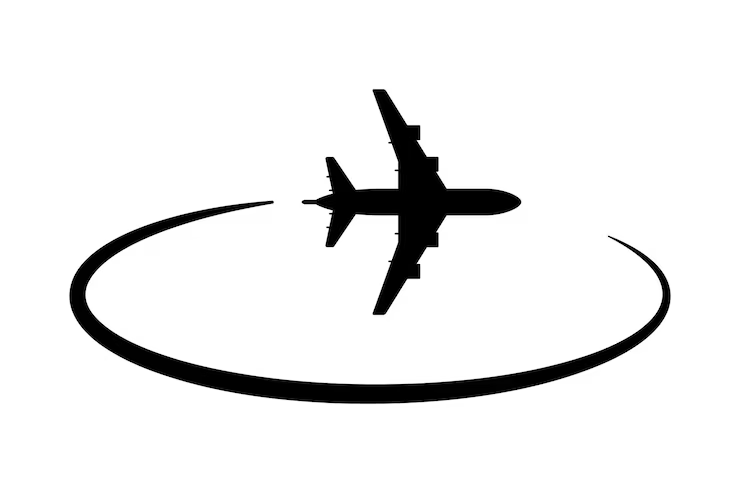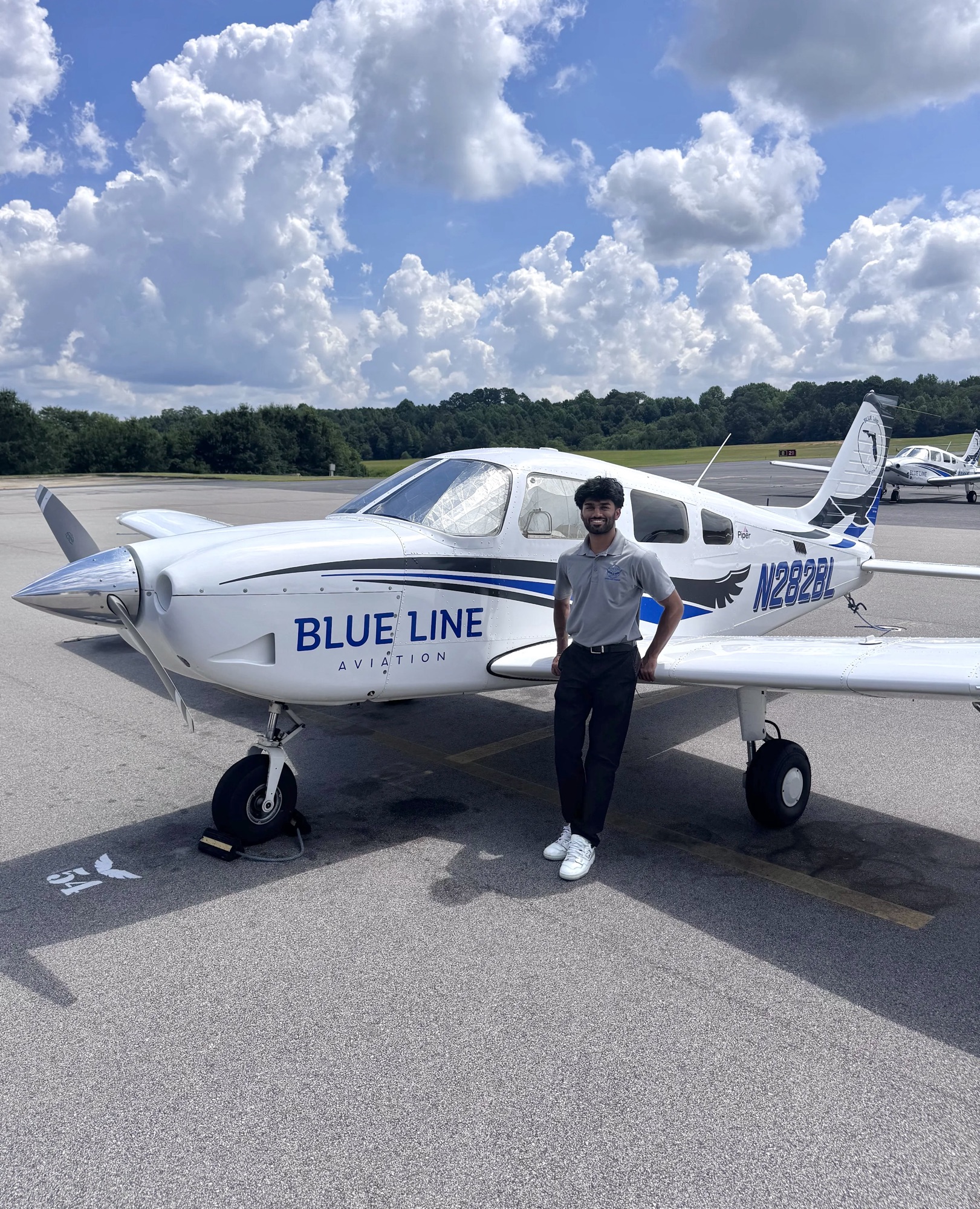Today, I passed my private pilot checkride.
It wasn’t a smooth or perfect journey. I had many setbacks—lessons that didn’t go as planned, an incompleted mock checkride, and a same-day retrain/recheck just before the real thing. But through all of it, I stayed committed to the process. I knew I was capable of doing it all—the challenge was doing it consistently.
That consistency didn’t just come from more flight hours or more studying. It came from how I lived outside the plane.
“Nothing changes if nothing changes.”
Changing my habits wasn’t just about passing a checkride—it was something I did for myself. Early on in this program, I realized I needed to build a routine that kept me focused, clear-minded, and healthy—especially as I stepped into a career path as demanding as this one.
I started simplifying everything. I prepped and ate the same meals every day to stay fueled and avoid decision fatigue. It took time to figure out meals I wouldn’t get tired of, but I found a system that worked. I made it a point to walk outside 8–10k steps daily, using that time to really breathe, reflect and stay mentally balanced. I worked out almost every day when I could, not just to look a certain way, but to keep myself sharp, disciplined, and present.
One of the biggest changes I made was cutting down my phone usage. I used to spend anywhere from 5 to 8+ hours a day on my phone—at least 3 of those just on social media, which was ridiculous. Once I saw how much that was draining my energy and focus, I set a hard 3-hour daily phone limit—usually keeping it around 2 to 2.5. That shift gave me more time to learn, to grow, and to be intentional with how I live.
Pre-Mock
Before my mock checkride, I was struggling to stay consistent with my performance. Some flights went well, others felt off. I know that’s a part of the process, and I wasn’t expecting perfection—but it was still frustrating knowing that I could’ve done better. The delays from bad weather didn’t help either. Incompleting lessons just kept pushing my progress back further. I had a few incomplete lessons—all just to get more reps in and see consistency with maneuvers and landings. It wasn’t that I didn’t understand what to do—I just wasn’t always executing at the level I needed to.
Mock Checkride – Failure/Success
By the time I got to my mock checkride, ground went smooth. A few minor mistakes, but I’d been confident on ground for weeks, so that part felt locked in.
Then came the flight. I was actually excited for it. The instructor I was flying with had good energy and was easy to get along with. Startup and taxi went well. Takeoff was solid. The pilotage and dead reckoning was good, set up autopilot without any issues, and slow flight felt dialed in after my primary instructor really made it click. Stalls were strong, though I was a bit slow on the power-off recovery—but I followed through well.
Then came the steep turns.
The first one started great, but I missed my rollout heading. The second wasn’t good at all. That was my first strike.
Then during the emergency descent, I put in full power—RPM shot up and caused an overspeed. That was strike two.
At that point, he told me I needed to lock in and turn things around. I was feeling the pressure.
I flew a correct emergency descent after that and set up for a simulated emergency landing—which went really well. I would’ve made the field without a problem. Then we leveled off at 1,200 ft and set up for S-turns. That’s where it unraveled. My altitude was off, I was chasing corrections, my airspeed got sloppy, and coordination was off. I knew the lesson was incompleted here.
The instructor told me to return to the airport and climb to 2,000 feet. We were about 10 miles out, field elevation was 1,200 ft, and it took me a bit too long to realize I should be climbing to 2,200 ft, so that I could overfly midfield. I eventually figured it out coming closer to around 7 miles out.
Back at the field, I entered the pattern, landed, and taxied in. I was honestly expecting him to rip me apart. Instead, he told me that overall, it was one of the better mock rides he’d seen. That caught me off guard—but it made me realize how much of this process is about managing small errors. Still, I had to incomplete the lesson, and we both knew it was for the better. I needed to clean things up before the real checkride.
I went back to my apartment frustrated—wondering when I’d finally get this done. About an hour later, the same instructor called me and asked if I was still at the school. I had missed the call, but when I called him back, he said he could get me back up for a retrain/recheck in an hour. I was all in—especially since it would keep me on track for my checkride in two days.
On the second flight, we started with an emergency descent, and this time I did it correctly. Then came S-turns again—messed up the first one, but he demonstrated it for me and gave me some tips that helped everything make more sense. We held that altitude and got slammed by turbulence while on autopilot—it absolutely rocked us both and had us dying, wondering what just happened.
Then came turns around a point. There was a storm in the distance that distracted me towards the end, but it went well. On the way back, things were shaping up. I did get a strike earlier for one of my S-turns, and another for bad judgment in the pattern—I didn’t check final and almost turned in front of traffic. That was a hard one to accept, but I knew I needed to pay better attention.
Now at two strikes again, the pressure was back on. We moved into landings—short field, soft field, and a power-off 180.
The short field looked long at first, but I managed to put it down right on the markers. The soft field approach was good, but I let the nose wheel barely tap early—still corrected and finished it strong. Then the power-off 180: the first one looked long and I was a bit fast, so I called a go-around. Second attempt, I slipped it in on final and made the landing.
I had barely made it—but I made it. The recheck was complete.
After taxiing back to the run-up area, the instructor asked how I felt about moving my checkride up to the next day. I wasn’t 100% confident, but I felt like I could pull it together. I didn’t think a full day off would help either—this flight had me sharp, and I was ready to take advantage of that momentum.
Checkride Day
The night before my checkride, I focused on staying sharp without overloading myself. I rewatched videos on perfecting steep turns and S-turns, chair-flew them, and made sure I was getting proper rest. I wasn’t cramming—I was just locking in what I already knew.
The morning of, the nerves hit me hard. I had no appetite but knew I needed to eat something to avoid crashing mid-flight—I had a protein bar, banana, and some coffee to carry me through. I got to the school, sat in the break room, and waited for the examiner. We were starting a little later than planned, but that extra time gave me space to let everything settle, calm the nerves, and quietly review any last-minute things I might fumble on.
When he arrived, we headed up to his office to start the oral portion. It actually went really well. I was a little slow on a couple one-off questions, but I got to the right answers and felt confident walking out. Then it was time for the flight.
He briefed me on how it was going to go, I went down and did my preflight, and soon we were rolling. Right away, I felt a good rhythm. The examiner was way more easy-going than I expected. I always thought he’d be more intimidating—kind of seeing him like a “final boss fight”. I told him that, and he laughed and said, “Yeah, I am. Don’t get it twisted.” But his energy was chill, and it felt like we got along well, which helped for the rest of the flight.
We started with a soft-field takeoff—it wasn’t bad, but it wasn’t my best either. After that, we climbed out, set up autopilot, and did pilotage and dead reckoning. I nearly missed my checkpoint because I was distracted from discussing fuel endurance, but I caught it just in time and called it out.
Next came steep turns—and they went great. That alone boosted my confidence, since I had been struggling on getting them right in the last few lessons. We went into slow flight and other maneuvers, all of which went smoothly. Emergency descent was solid—I came close to missing the recovery altitude but caught it just in time. The simulated engine-out looked good too, I would’ve made the field.
S-turns were decent—well within standards, which is what mattered. Then we turned back to the airport. I was asked how I’d enter the pattern and initially gave the wrong answer but corrected myself. He then set me up on a straight-in instrument approach, which was a cool preview of what’s to come in my instrument training.
We did a few laps and landings, and they all came out pretty clean. After the first couple landings, I knew—I was passing. The relief started to hit me mid-pattern. I was in the flow and finishing strong.

We taxied back, and in those last few minutes I got to know the examiner a little better. The whole checkride was actually way more enjoyable than I ever imagined. During the debrief, he gave me solid feedback on things I could’ve tightened up, but overall—it was finally done. I passed and completed private, now it’s time to move onto instrument.

